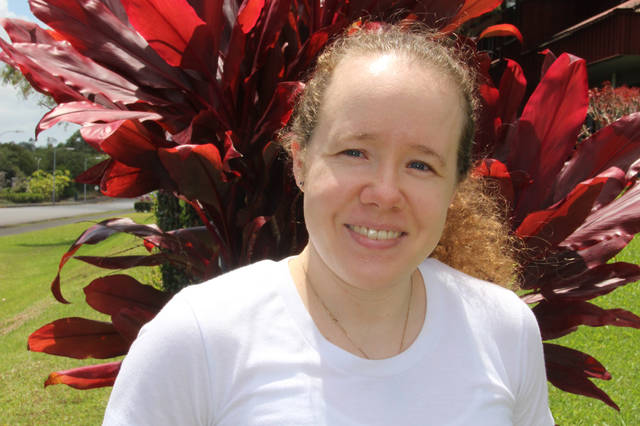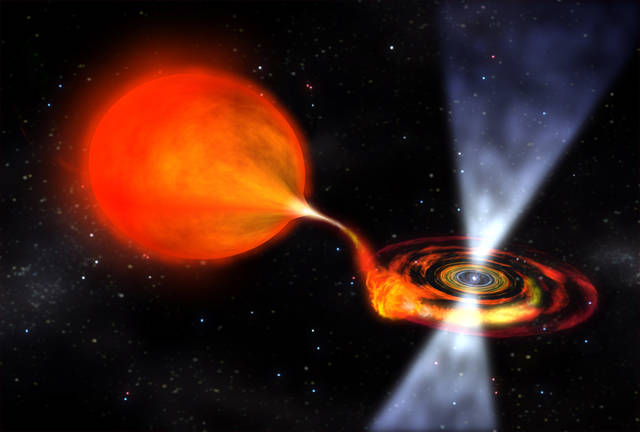Join the J.S. Plaskett Medal award winner Alex Tetarenko for her presentation, Extreme Jet Ejections from the Black Hole V404 Cygni, at 7 p.m. Friday, April 19, in Imiloa Astronomy Centers planetarium.
Join the J.S. Plaskett Medal award winner Alex Tetarenko for her presentation, “Extreme Jet Ejections from the Black Hole V404 Cygni,” at 7 p.m. Friday, April 19, in ‘Imiloa Astronomy Center’s planetarium.
Tetarenko will share the striking results from her team’s observing campaign on the X-Ray Binary V404 Cygni during the most active phase of its recent outburst. At about 8,000 light-years from Earth, V44 Cygni lies within the constellation Cygnus. After having been in a dormant inactive state for more than 26 years, the X-ray binary system underwent an outburst in 2015, displaying extraordinary behavior never before seen in such a system.
Tetarenko will discuss how she and her team used this unique event to study the enigmatic astrophysical jets of the universe. Their rich data set combines synchronized observations across four different telescopes, including two on the summit of Maunakea (James Clerk Maxwell Telescope and Submillimeter Array) and reveals new insight into how matter behaves around a black hole and how jets are produced.
Astrophysical jets are ever-present phenomena in the universe linked to a wide range of objects, from young stars to black holes. These powerful outflows deposit significant amounts of energy and matter into the surrounding space, affecting star formation, galaxy evolution and even the distribution of matter in the universe. However, despite decades of research, current knowledge of the physics that gives rise to and governs the behavior of jets is extremely limited.
Of all the systems that launch jets, X-ray binaries are particularly excellent test beds for studying jet phenomena. X-Ray binary systems typically contain a stellar-mass compact object, frequently a black hole that orbits around a star and siphons off material from that star. These systems are typically fleeting in nature, evolving from periods of inactivity into a bright outbursting state on timescales of days to months, in turn providing a real-time view of how jets evolve and interact with their environment.
Tetarenko is a postdoctoral fellow at the East Asian Observatory. She completed her masters of science and doctoral degrees at the University of Alberta in Edmonton, Alberta, Canada. Her research focusses on studying relativistic jets launched from black hole systems in our galaxy. The prestigious J.S. Plaskett Medal award was most recently given to Tetarenko for her exceptional doctoral thesis in astronomy or astrophysics. This distinguished award is given to the Ph.D. graduate from a Canadian university who is judged to have submitted the most outstanding doctoral thesis in astronomy or astrophysics during the past two years throughout all of Canada.
This presentation is part of ‘Imiloa’s Maunakea Skies Astronomy Talk Series.
For more information, visit www.ImiloaHawaii.org or call 932-8901.




